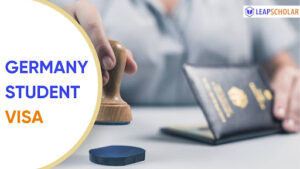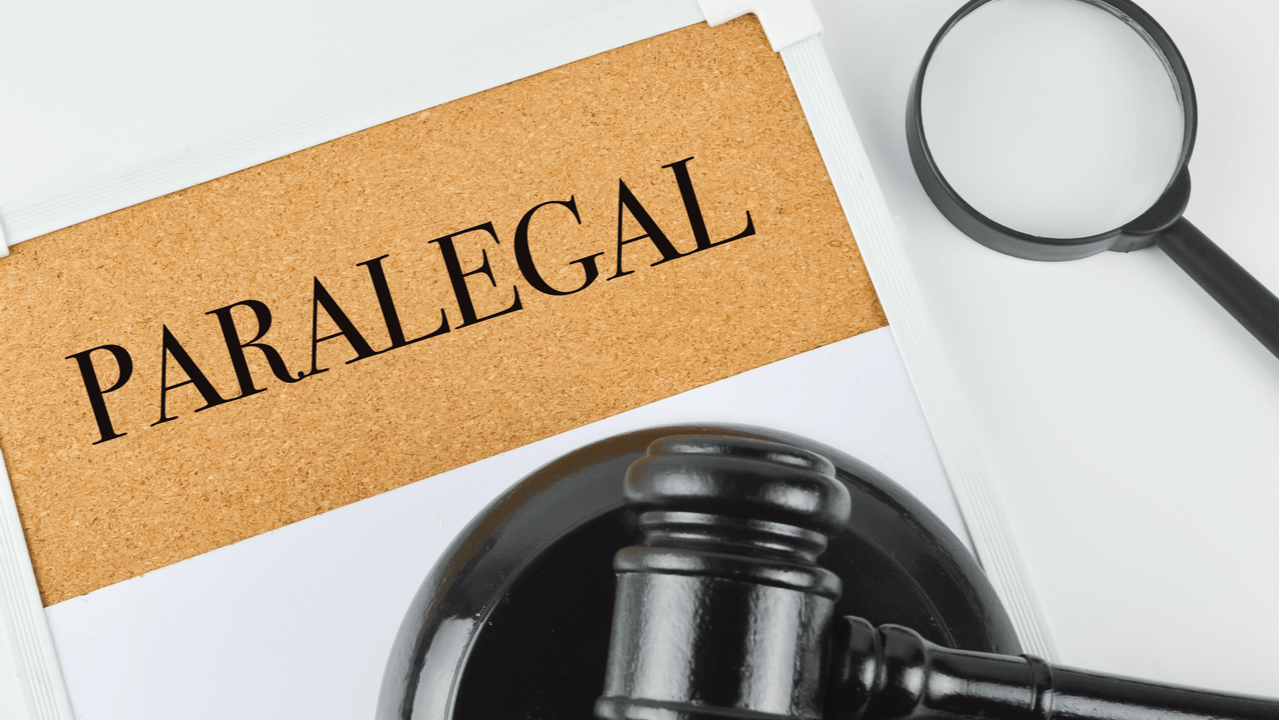Is your career goal flying through the skies with jaw-dropping views, adrenaline rush every morning, and unbeatable travel perks? Training as a pilot is right up your alley!
Upon that, the number of job opportunities in the aviation sector is expected to grow to 17,100 from 2022 to 2031 in Canada
Don’t worry…We have got you covered about the best flying schools in Canada!
Crack IELTS in 4 Weeks! IELTS 8 Band Guarantee

Ace IELTS with Band Guarantee. Get access to Live Classes & 100+ Mock Test. Join Free IELTS Masterclass Now!
Crack IELTS in 4 Weeks! IELTS 8 Band Guarantee
Ace IELTS with Band Guarantee. Get access to Live Classes & 100+ Mock Test. Join Free IELTS Masterclass Now!

Key Highlights
| Average Tuition Fee for Flying Schools in Canada | From INR 7L to INR 15L |
| Factors to Choose the Best School | Accreditation and Certification Reputation and Track Record Instructor Qualifications and Experience Training Fleet Curriculum and Training Programs Facilities and Resources Location and Weather Cost and Financial Aid Job Placement Assistance and Career Services |
| Requirements for Pilot Training in Canada | Minimum Age, Medical Fitness Certificate, Language Proficiency, Education till 12th class Language Proficiency Test |
| Career Opportunities and Salaries | Air Pilot : INR 16L – INR 57L Captain – Air Transport: INR 63L – INR 1.5Cr Check Pilot: INR 38L – INR 75L |
Why Aviation in Canada?
Canada has a rich history in aviation and is renowned for its vast and diverse landscapes, which make it an ideal location for aviation activities.
Here are the top 5 reasons why aviation in Canada is significant:
- State-of-the-Art Facilities: Canada boasts world-class aviation facilities equipped with the latest technology and infrastructure. From modern airports and maintenance facilities to cutting-edge flight simulators and training centres, students have access to top-notch resources for their education and training.
- Diverse Training Programs: Aviation schools in Canada offer a wide range of training programs catering to various career paths in aviation. Whether aspiring to be a commercial pilot, aerospace engineer, air traffic controller, or aviation manager, students can find specialised courses tailored to their interests and goals.
- Experienced Instructors: Canada’s aviation schools employ highly qualified and experienced instructors who bring real-world expertise to the classroom and flight training sessions. Many instructors are seasoned pilots or industry professionals with extensive knowledge and practical insights to share with their students.
- Regulatory Compliance: Canada has stringent regulatory standards for aviation training, ensuring that schools adhere to rigorous safety and quality guidelines. Transport Canada, the country’s aviation regulatory authority, sets and enforces standards for pilot training, aircraft maintenance, and aviation operations to uphold safety and professionalism in the industry.
- Practical Training Opportunities: One of the standout features of aviation training in Canada is the abundance of practical training opportunities. Students can access diverse flying environments, including urban, rural, mountainous, and coastal areas. It allows them to gain valuable experience in various conditions and scenarios.
These factors collectively make Canada an attractive destination for aviation education. It provides students with a conducive learning environment, access to cutting-edge facilities, experienced instructors, and practical training opportunities essential for a successful career in aviation.
So why wait? Let’s check out the top flying schools in Canada.
Exploring a career in Canada? Discover your path with Leap Scholar for expert guidance on studying abroad! Explore now
Top 5 Flight Schools for Pilot Courses in Canada
The top flying schools in Canada that we have jotted down for you have exceptional faculty and top-quality flight training. Choosing the right one will set you up for a successful and promising career in aviation.
Before we discuss each school in detail, let’s present a brief snapshot of these schools. Have a look!
| Schools | Programs Offered | Average Course Fee |
| Canada Aviation Academy | Recreational Pilot Permit Private Pilot Licence Commercial Pilot Licence Flight Instructor Rating Night Rating VFR Over-The-Top | INR 1L to INR 10L (Overall course fee) |
| Seneca – School of Aviation | Honours Bachelor of Aviation Technology Aviation Safety Program Aviation Operations Program | INR 8L ( Annual Fee) |
| Winnipeg Aviation | Familiarisation Flight Recreational Pilot Permit (RPP) Private Pilot License (PPL) Commercial Pilot License Seaplane Rating Multi-Engine Rating Single Engine Instrument Rating Multi-Engine Instrument Rating Night Rating Instructor Rating Aerobatics Training Professional Pilot Course | INR 10L (Overall course fee) |
| Confederation College | Aerospace Manufacturing Engineering Technician Aerospace Manufacturing Engineering Technology Aviation – Flight Management Aviation Technician – Aircraft Maintenance Pre-Technology – Technology/Aviation | INR 8L ( Annual Fee) |
| Tillsonburg Aviation Flying School | Ground School Introductory Flight Recreational Pilot Permit Private Pilot Licence Night Rating VFR Over the Top Rating Long Point Ecosystem Tour Instrument Rating | INR 7L(Overall course fee) |
Now that you have an idea of the key details of the top 5 flying schools in Canada, let’s walk you through some more details.
1. Canada Aviation Academy
Canada Aviation Academy, accredited by Transport Canada, provides top-notch flight training programs in Canada. It has experienced instructors, modern facilities, and a stellar reputation for producing skilled pilots.
Known For: The academy has been noted for its high-quality training services for hobby and professional pilots since its establishment in 2013. It is regulated by Transport Canada, which suggests a robust training framework
Industry Partnerships: They have partnerships with local aviation entities. They also provide joint classroom teaching and in-flight training through collaborations like with the University of The Fraser Valley.
Consider Leap Scholar for top-notch amenities and pathways if you’re considering studying abroad.
2. Seneca School of Aviation
Seneca Polytechnic, located in Toronto, Canada, is recognised as a leading institution in aviation education, boasting over 50 years of expertise in this field. The college offers a variety of programs tailored to different aspects of aviation, from pilot training to operations and safety management.
Known for: Seneca’s aviation programs are well-regarded, and the school has a strong reputation in the aviation industry. Their comprehensive programs incorporate pilot training, aviation management, and technology aspects.
.
Industry Partnerships: Strong ties with major airlines and aviation companies through initiatives like the Jazz Aviation Pathway Program for pilot graduates.
3. Winnipeg Aviation
Winnipeg Aviation at St. Andrews Airport in Manitoba offers diverse pilot training programs in Canada, including licences and specialised ratings. The school is known for its rigorous, safety-focused flight training in Canada. It operates daily to accommodate various schedules. Training includes basic piloting and advanced simulator sessions, utilising a Cessna and Piper aircraft fleet.
Known for: The School demands high standards from its students; Winnipeg Aviation has been a significant player in flight training for over 45 years. The school prides itself on safety and professionalism, which likely contributes positively to student outcomes.
4. Confederation College
Confederation College’s Aviation Centre of Excellence at the Thunder Bay International Airport offers aviation programs through its modern facilities. The centre includes two hangars, classrooms, and labs designed to provide a complete educational experience from “Build it, Fly it, Maintain it.”
Known For: The Aviation Centre of Excellence at Confederation College offers robust training in various aspects of aviation and is recognised for expanding its programs and updating its training fleet.
Industry Partnerships: Collaborates with aviation industries for practical training and career opportunities.
5. Tillsonburg Aviation Flying School, Canada
Tillsonburg Flying School, located at a quiet country airport in Ontario, offers tailored flight training with minimal ground wait times. The school provides various programs, including private pilot licences and ratings for night and instrument. The school also accommodates shift workers with unique scheduling options for ground school.
Known for: This school is noted for its personalised approach to training, which might positively influence student success. It operates in a less busy airport environment, which allows for more airtime and better hands-on training outcomes.
Now that we have information about the top flying schools in Canada, let’s understand how to choose the right one for you!
How Do You Choose From the Top Flying Schools in Canada?
Choosing the right aviation school in Canada is a crucial step. Consider various factors to determine the best flying school in Canada for your needs, ensuring it aligns with your training requirements and career goals.
Factors to Consider When Choosing the Best Flying School in Canada
Choosing the best flying school in Canada involves considering several key factors to ensure quality training and achieving your aviation goals.
Here are some factors to consider.
- Accreditation and Certification: Ensure that the relevant aviation authorities, such as Transport Canada, accredit the flying school. Accreditation ensures that the school meets the required training quality and safety standards
- Reputation and Track Record: Look for reviews, testimonials, and feedback from current and former students. A school with a positive track record and high success rates among graduates is likely to provide quality training
- Instructor Qualifications and Experience: Experienced instructors with a strong background in aviation and teaching can significantly enhance your learning experience and skill development
- Training Fleet: Evaluate the quality and diversity of the school’s training fleet. A well-maintained fleet of modern aircraft equipped with the latest avionics and safety features is essential for practical training. Ensure that the school has the type of aircraft you want to train on, whether single-engine, multi-engine, or specialised
- Curriculum and Training Programs: Review the school’s curriculum and training programs. Look for comprehensive programs that cover all necessary aspects of pilot training, including ground school, flight training, and simulator sessions. Ensure that the curriculum aligns with your aviation goals and preferences.
- Facilities and Resources: Visit the school or explore their facilities virtually to assess the learning environment. Check for well-equipped classrooms, flight simulators, maintenance facilities, and other resources essential for practical training. Access to modern technology and amenities can enhance your learning experience.
- Location and Weather: Consider the school’s location and the prevailing weather conditions. Choose a location with favourable weather conditions conducive to flight training throughout the year. Factors such as airspace congestion and proximity to airports should also be considered for diverse training opportunities.
- Cost and Financial Aid for a Pilot Course in Canada: Evaluate the cost of a pilot training course in Canada, including tuition fees, aircraft rental rates, and additional expenses such as textbooks and exams. Compare the costs of different schools and consider factors such as value for money, quality of training, and potential financial aid options, including scholarships, grants, and loans.
- Job Placement Assistance and Career Services: A school that provides support with job placement, networking opportunities, and career guidance can help you transition smoothly into the aviation industry after completing your training
- Personal Fit and Comfort: Trust your instincts and consider how comfortable you feel with the school’s culture, environment, and teaching approach. Choose a school where you feel welcomed, supported, and confident in your ability to succeed as a pilot.
Now that you have all the information necessary, choose the best flying school in Canada. Let’s know how to apply!
Application Process For Flight Schools in Canada for International Students
Applying to a flying school in Canada involves several steps that prospective pilots must follow. Whether you dream of becoming a commercial airline pilot or just want to fly recreationally, understanding the application process is crucial.
Here are some general steps to help you navigate through the application process for flying schools in Canada:
Step 1: Research and Choose a Flying School
First, research the various flying schools across Canada. Consider the programs offered (e.g., recreational, commercial), location, cost, fleet quality, and the school’s reputation. Transport Canada provides a list of approved training organisations, which is a good starting point.
Step 2: Meet the Basic Requirements
Before applying, ensure you meet the basic entry requirements.
These usually include:
- Being at least 17 years old for a private pilot licence and 18 for a commercial one
- We are holding a high school diploma or equivalent
- Proficiency in English or French, depending on the school’s location
Step 3: Obtain a Medical Certificate
Applicants must pass a medical examination by a Transport Canada-approved physician to ensure they meet the health standards necessary for flying.
These are different classes of medical certificates:
- Class 1 is mandatory for commercial pilots
- Class 3 for recreational pilots
Step 4: Submit Your Application
Once you have chosen a school and ensured you meet all prerequisites, submit your application. This usually involves filling out an application form, providing academic transcripts, and sometimes a letter of intent or recommendations.
Step 5: Interview and Assessment
Some flying schools may require you to undergo an interview and an assessment. These can include aptitude tests, personality assessments, and a review of your knowledge of mathematics and physics related to aviation.
Step 6: Secure Funding for Pilot course in Canada
Pilot training costs in Canada can be expensive, so having your finances in order is essential.
Look into scholarships, loans, and grants for aviation students offered by these flying schools in Canada. Some schools offer payment plans or financial aid. Look at their specific websites to learn more about the financial assistance they offer.
Step 7: Start Your Flight Training in Canada
Once accepted, you’ll begin your training program. This will include ground school classes, flight training, and exams. The program length can vary depending on whether it’s part-time or full-time and the type of license you are pursuing.
Step 8: Pass the Licencing Exams
Toward the end of your training, you must pass a written exam and a flight test administered by Transport Canada to receive your pilot licence.
Remember, each flying school may have slightly different application processes and requirements, so it’s essential to contact the schools directly for specific details.
Start by visiting their websites or contacting their admissions offices. While challenging, this journey leads to one of the most exhilarating careers in the skies!
Careers through Flying Schools in Canada
After completing training at a flying school in Canada, pilots have various career paths they can pursue globally. Many start as First Officers in regional airlines or charter services, gradually progressing to larger airlines.
Opportunities also exist in cargo transport, corporate aviation, and flight instruction. Some pilots even advance to roles in airline operations or safety management. Flying schools in Canada often connect with regional airlines, providing graduates with a direct pathway to employment.
Salaries for pilots vary based on experience, aircraft type, and the employer.
Here’s a table depicting the salary range for different pilot roles.
| Job Title | Salary Range Per Annum |
| Air Pilot | INR 15L – INR 57L |
| Captain – Air Transport | INR 62L – INR 1Cr |
| Check Pilot | INR 38L – INR 75L |
| Chief Flying Instructor | INR 50L – INR 94L |
| Chief Pilot | INR 67L – INR 1.2Cr |
| Co-pilot | INR 32L – INR 50L |
| Flight Engineer | INR 31L – INR 57L |
| Flying Instructor | INR 28L – INR 53L |
| Pilot Instructor | INR 32L – INR 57L |
| Second Officer – Air Transport | INR 25L – INR 50L |
| Test Pilot | INR 50L – INR 88L |
To Sum Up
Canada is home to some of the best flying schools around. These schools are known for their top-notch training, which opens doors to many aviation careers. These schools offer everything from state-of-the-art simulators to direct partnerships with major airlines, ensuring students are ready to enter the cockpit after graduation.
Places like Seneca College, Winnipeg Aviation, and Canada Aviation Academy are at the forefront, preparing students for everything the sky offers. While pilot training is a serious investment, the demand for pilots worldwide means your prospects after graduation are bright, with opportunities in commercial airlines, corporate aviation, and more.
Flying Schools in Canada are your runway to a thrilling and fulfilling career in aviation.
Embark on the exciting journey of building your career in Canada with Leap Scholar by your side. Our expert guidance on studying abroad will help you sort visa-related issues, and we can also connect you with some of the best tutors to simplify your learning experience.
Take the first step towards your future success and explore the opportunities. Explore now!
Frequently Asked Questions
-
Q. What is the Cost of pilot training in Canada?
A. Here’s a summary of the pilot training costs in Canada:
Private Pilot License (PPL) – INR 6L to INR 9L
Commercial Pilot License (CPL) – INR 18L to INR 38L
Airline Transport Pilot License (ATPL) – INR 47L
Multi-Engine Rating – INR 4L to INR 6L
Instrument Rating – INR 6L to INR 9L -
Q. What is the Current demand for pilots in Canada?
A. As of now, the job prospects for pilots across most provinces in Canada range from good to very good, with particular emphasis on regions like Ontario, where prospects are considered very good.
Employment prospects for pilots over the next decade look positive, with new job openings arising from the need to replace retiring staff and the aviation industry’s expansion.
-
Q. Can an Indian student become a pilot in Canada?
A. Yes, an Indian student can train as a pilot in Canada by securing admission to a Transport Canada-approved flying school that welcomes international students.
The process includes satisfying age and educational prerequisites, obtaining a Canadian study permit, and successfully passing a medical examination accredited by Transport Canada.
These steps ensure the student meets all regulatory requirements to pursue pilot training in Canada.
-
Q. What are the prerequisites for joining a flying school in Canada?
A. Before enrolling in a flying school in Canada, you must have completed high school and be at least 17 to train for a Private Pilot Licence (PPL) or 18 for a Commercial Pilot Licence (CPL).
Additionally, you must pass a Category 1 medical exam conducted by a Transport Canada-approved physician to ensure you meet the health standards required for pilots.
-
Q. How do I choose the right flying school in Canada?
A. Choosing the right flying school depends on several factors, including the types of programs offered, the quality of the training fleet, the experience of instructors, and the school’s industry connections.
It’s also important to consider the school’s location, facilities, and whether it offers pathways to employment. Visiting schools, attending open houses, and speaking with current students and alumni can provide valuable insights.
-
Q. What kind of licences can I obtain from a flying school in Canada?
A. Canadian flying schools offer various pilot licences and ratings, including:
Recreational Pilot Permit
Private Pilot Licence
Commercial Pilot License
Flight Instructor Rating
Night Rating
VFR Over-The-Top -
Q. How long does it take to become a licenced pilot in Canada?
A. The duration of becoming a licenced pilot can vary. Obtaining a PPL can take anywhere from 6 to 12 months, while a CPL generally takes 18 to 24 months, depending on whether you are studying full-time or part-time. The time frame can be extended if you pursue additional ratings or the ATPL.
-
Q. Can international students enrol in Canadian flying schools?A. Yes, many flying schools in Canada accept international students. However, international applicants must ensure that the school is designated by the Canadian government and check for specific visa requirements that apply to their situation.
Additionally, international students should prepare for potentially higher tuition fees and ensure they meet all entry requirements.
-
Q. What type of aircraft will I fly during my training?
A. The type of aircraft used in training varies by school but typically includes popular models like the Cessna 152, Cessna 172, andPiper aircraft.
These aircraft are chosen for their reliability and suitability for training new pilots. Most schools will offer both single-engine and multi-engine training aircraft.
-
Q. How do Canadian flying schools assist with employment after graduation?
A. Many flying schools in Canada have established networks and partnerships with airlines and other aviation-related companies.
These connections facilitate job placements. Schools often offer career services that assist with resume building, interview preparation, and job placement.
-
Q. What ongoing training will I need after obtaining my pilot’s licence?
A. Pilots must engage in ongoing training and recertification throughout their careers to remain up-to-date with the latest aviation standards and technologies.
This includes simulator training, recurrent training for specific aircraft types, and continuous education on new aviation regulations and safety practices.







